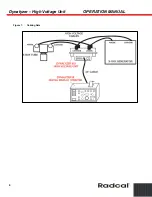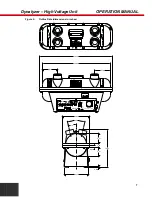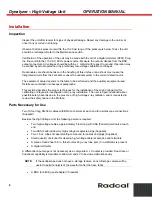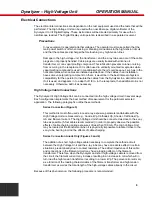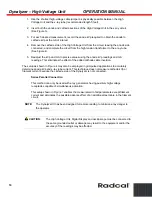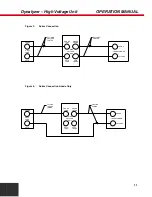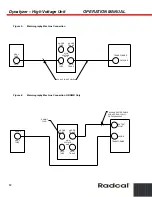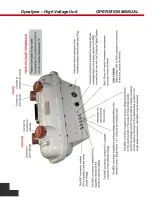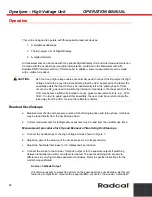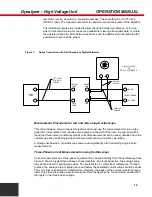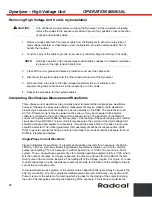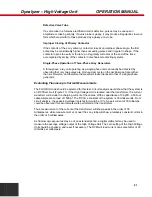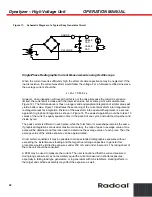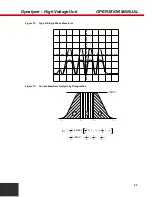
Dynalyzer – High Voltage Unit
OPERATION MANUAL
20
Figure 10:
Typical Three-Phase Waveform
kVp Calibration for X-Ray Generator
This should be done for each mA station. In general, voltage decreases with increasing current. If
the converse is found, the system is overcompensated. Refer to the manufacturer’s specifications
to determine if the system is operation properly.
Equipment Fault Diagnosis by Voltage Waveform Analysis
The High Voltage Unit is a useful service aid. Among the faults possible in an x-ray controller, the
following are listed as an aid:
Transient Detection
Transient irregularities in the waveform seen on the oscilloscope may be due to a variety
of causes. These transient conditions may produce voltages which are considerably in
excess of the kVp setting and may damage the x-ray tube, high-voltage cables, or high-
voltage transformer.
Transient voltages in the high-voltage circuit may occur at a very high frequency so that
the trace on the oscilloscope is very low in intensity or may not show at all with normal
adjustments. Whenever a pulse or portion of a pulse is missing from the trace, some
improvement may be obtained if the exposure is repeated with the intensity control set to a
higher level. The trace obtained should be examined closely for excessive voltages.
Defective X-ray Tube
Gas in any x-ray produces a waveform which is very irregular at high kVp. “Kicking” (arc-
over) of the x-ray tube is accompanied by rapid oscillations which may show up as a
missing pulse.
EFFECTIVE X-RAY
EXPOSURE
H
F
E
J
G
75%

